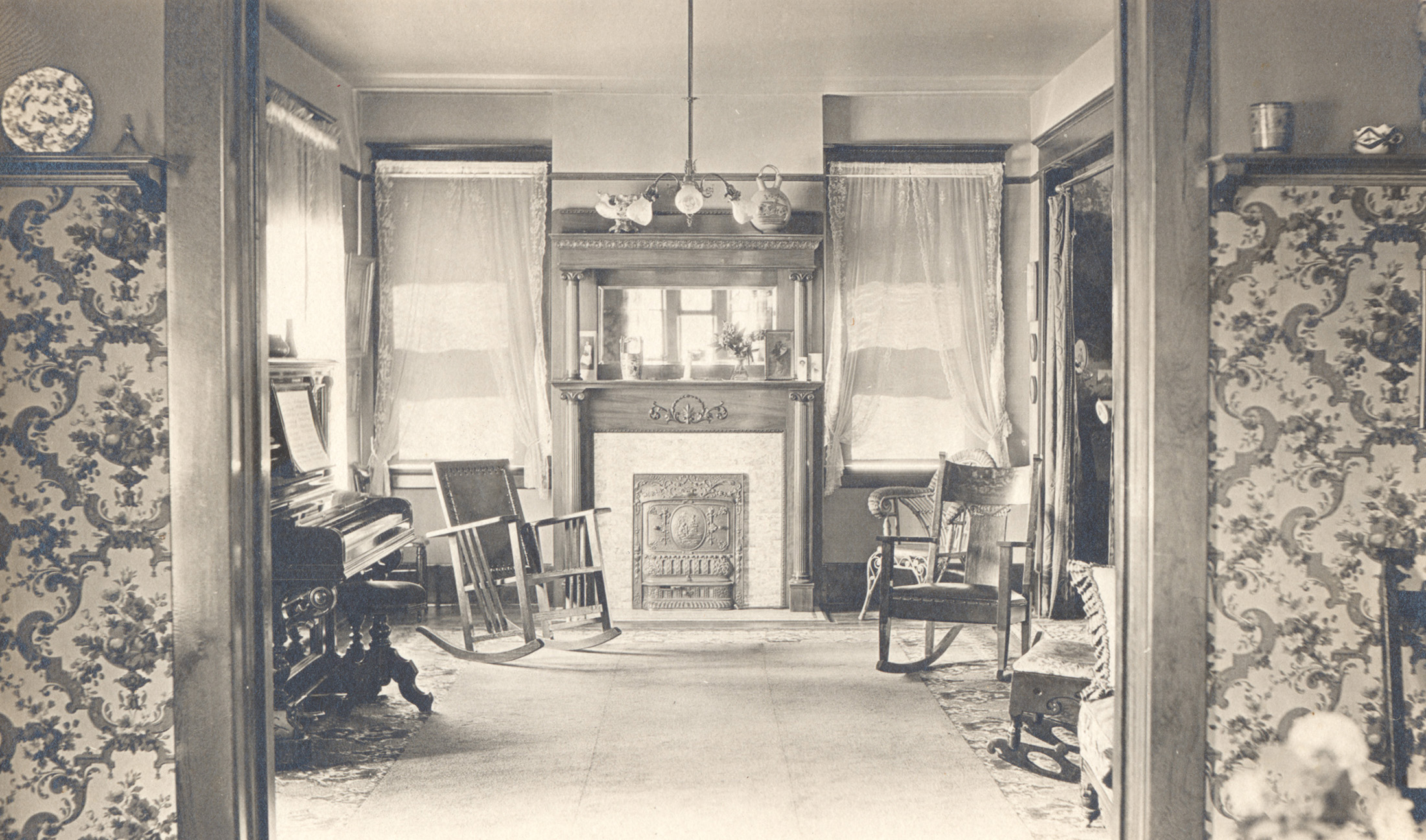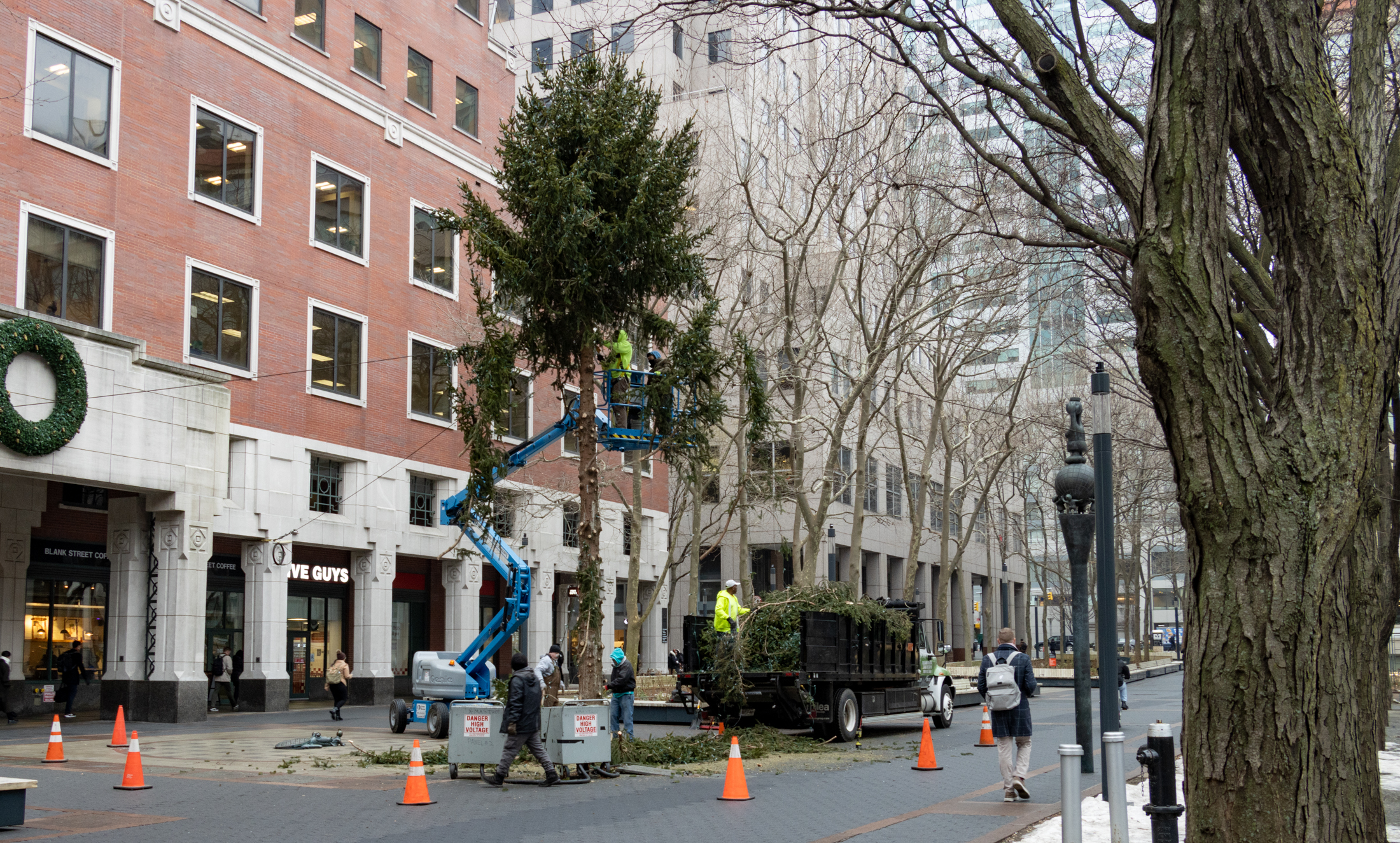2009 Predictions and Resolutions?
Anyone have any predictions for the Brooklyn real estate market or renovation resolutions? How about the financial markets in general? As far as the real estate market goes, we’re just hoping that Clinton Hill doesn’t slip too far below 2004 values (where it’s probably pretty close to already); as for renovation, it’s a fair bet…


Anyone have any predictions for the Brooklyn real estate market or renovation resolutions? How about the financial markets in general? As far as the real estate market goes, we’re just hoping that Clinton Hill doesn’t slip too far below 2004 values (where it’s probably pretty close to already); as for renovation, it’s a fair bet that we won’t be moving the kitchen down to the parlor floor in ’09. Others?





New York, New York: America’s Resilient City
By Edward L. Glaeser
Edward L. Glaeser is an economist at Harvard.
Wall Street is just about to finish the worst year since 1931. American housing markets are finishing their worst year in recorded history. New York’s economy is highly dependent on Wall Street; about 40 percent of Manhattan’s total payroll was in finance and insurance in 2006. These three facts should have created the mother of all price crashes in New York City real estate.
Yet New York’s housing prices are doing remarkably well relative to elsewhere in America.
Today’s Case-Shiller housing price figures indicate that New York City’s prices dropped 7.5 percent in the last year, while prices in Los Angeles declined 27.9 percent. Nationwide prices dropped 18 percent. New York is the only major metropolitan area with prices that are still 90 percent above prices in January 2000. According to National Association of Realtors data, New York is the only city in the continental United States, outside of San Francisco Bay, where median sales prices remain north of $500,000.
Despite Wall Street’s suffering, the New York area’s unemployment rate, 5.6 percent in the latest figures, is lower than that in many other major cities. The comparable unemployment rate for Los Angeles is 8.2 percent. The comparable number for Chicago is 6.4 percent.
This is not the first time that New York has weathered a downturn well. Between 1950 and 2000, all but 2 of the 10 largest American cities lost 20 percent or more of their populations. America’s older, colder cities were buffeted badly by an exodus of manufacturing jobs, suburbanization and the move to the Sun Belt. Some cities — Cleveland, Detroit and St. Louis — shrank to one-half or less of their former size. New York and Los Angeles were the two cities that grew. While Los Angeles had everything going for it — cars, sunshine, movie stars — New York, then as now, seemed to have everything going against it.
Every older city has survived a number of recessions. Boston has been around for almost 400 years despite having few natural advantages except cranberry bogs and a decent harbor. Over and over again, economic shocks challenged Boston’s survival. Time and time again, smart people learning from each other in a dense city have come up with new ways to thrive.
For the city’s first three centuries, New York thrived as America’s most important port. Nature endowed Manhattan with a great natural harbor, a deep long river that cut into a fertile hinterland and a central location on the Eastern seaboard. These gifts made New York that hub of trans-Atlantic commerce in the 19th century. New York’s major industries grew up around the port, such as sugar refining, printing and publishing, and the garment industry.
Over the 20th century, the advantages that came from the ports and railroads that had created older cities disappeared. Suburbanization, globalization and the exodus of urban manufacturing hit all of America’s older cities. When other cities, including Boston, experienced significant population declines from 1950 to 1970, New York City still grew, albeit modestly. Only during the 1970s, the years of my Manhattan youth, did the city a suffer major population decline.
However, New York managed to come roaring back, while other cities have just continued to fall. The secret of New York’s post-1970 reinvention was that smart people, who knew each other and learned from each, innovated in ways that made billions in financial services. The same density that once served to get hogsheads onto clipper ships served to spread ideas.
What does this mean for the future?
New York still has an amazing concentration of talent. That talent is more effective because all those smart people are connected because of the city’s extreme population density levels. Historically, human capital — the education and skills of a work force — predicts which cities are able to reinvent themselves and which ones are not. Those people who are continuing to pay high prices for Manhattan real estate are implicitly betting that New York’s human capital will continue to come up with new ways of reinventing the city.
I won’t be surprised if Manhattan prices do drop in the next few years, but I also strongly believe that the future of New York City continues to be bright. Homo sapiens are a social species; almost all of what we know we learn from each other. Dense cities, like New York, succeed when they take advantage of this fundamental aspect of our humanity. They thrive by enabling us to connect with each other, which then promotes learning and innovation. The current downturn will only increase the returns to being smart, and you get smart by hanging around smart people. As long as New York continues to attract and connect those people, the city will continue to thrive.
Could 2009 be the year when the phrase D-O-N-E-D-E-A-L is finally retired from Brownstoner?
I’m going to go out on a limb and predict the What’s war is finally going to end. i’d say in October. On a Tuesday. Sometime before noon.
I think that many of us probably realize that we’ve had the “good life” for a long time, but that the “good life” is very much an endangered species unless we do something to change our government and our way of life – fast.
My prediction, unfortunately, is that the outgoing administration of war pigs, along with an alarming number of teflon-coated pigs on Wall street and elsewhere, have done damage that has yet to reveal itself. I feel like we all must resolve to take our country back from the lobbyists and corporations that are bloodletting us, and making us loathed around the world. And happy as I am that Mr. Obama will give us a fresh start, let’s not kid ourselves that he alone has the power to revert us back to the good ‘ole days.
This means getting rid of inept senators and house members (about 75% of each) who epitomize the word stupid. These are the very people who allowed Henry Paulson and the other pigs in the Treasury to steal our money and give approximately 1.5 billion in bogus bonuses to bank executives through the TARP program over the last few months. These are the same elected officials who can’t even handle writing a simple contract with the receiving banks that would have prevented this abuse of taxpayer funds. Why is that? These are the same idiots that allowed Bush to lob bombs for no good reason while running the till dry. This is really basic sh*t that obviously connotes more serious and nefarious undertones.
I love the finer things in life, and I’m just as fascinated as the next person with topics like summer concerts in prospect park, wolf vs. viking, new restaurants in ft. greene, and the love we all share for brooklyn and new york, but maybe it’s time for all of us to look at the bigger picture so that our kids have the same opportunities that we did. Worrying about house values and neighborhood crime trends, while important, are very little things in a big picture that most of us are unwilling to face.
Don’t trust the government to do the right thing – I don’t think they will unless they are compelled to. We should all be mad as hell right now!
On the positive side, we live in Brooklyn and the rest of the country has no clue what they’re missing!!! Happy New Year!
I think that many of us probably realize that we’ve had the “good life” for a long time, but that the “good life” is very much an endangered species unless we do something to change our government and our way of life – fast.
My prediction, unfortunately, is that the outgoing administration of war pigs, along with an alarming number of teflon-coated pigs on Wall street and elsewhere, have done damage that has yet to reveal itself. I feel like we all must resolve to take our country back from the lobbyists and corporations that are bloodletting us, and making us loathed around the world. And happy as I am that Mr. Obama will give us a fresh start, let’s not kid ourselves that he alone has the power to revert us back to the good ‘ole days.
This means getting rid of inept senators and house members (about 75% of each) who epitomize the word stupid. These are the very people who allowed Henry Paulson and the other pigs in the Treasury to steal our money and give approximately 1.5 billion in bogus bonuses to bank executives through the TARP program over the last few months. These are the same elected officials who can’t even handle writing a simple contract with the receiving banks that would have prevented this abuse of taxpayer funds. Why is that? These are the same idiots that allowed Bush to lob bombs for no good reason while running the till dry. This is really basic sh*t that obviously connotes more serious and nefarious undertones.
I love the finer things in life, and I’m just as fascinated as the next person with topics like summer concerts in prospect park, wolf vs. viking, new restaurants in ft. greene, and the love we all share for brooklyn and new york, but maybe it’s time for all of us to look at the bigger picture so that our kids have the same opportunities that we did. Worrying about house values and neighborhood crime trends, while important, are very little things in a big picture that most of us are unwilling to face.
Don’t trust the government to do the right thing – I don’t think they will unless they are compelled to. We should all be mad as hell right now!
On the positive side, we live in Brooklyn and the rest of the country has no clue what they’re missing!!! Happy New Year!
2009- Will begin as a very tough year but will turn around in the second half, especially once the media stop pressing negativity into our brains.
MM i LOVED that skit on living color hahahah
ya mon what u mean u only work 2 jobs? you laaaazy! hahah
*rob*
I see 2009 as a year of lower spending and probably the worse year of the recession. The Brooklyn RE Market will fall at least 10-20 percent more. Alot of the rich have taken this fall worse than the have nots. I guess the WHAT loves that. Borrowing is alot tighter and homes at the higher end will be a harder buy for most. As for the market who knows but my prediction is that we will start heading lower as soon as the new year begins. Of course I was correct all 2008 so I expect to be wrong as soon as 2009 begins… The market is now in a pattern, if it moves to break either the 915 range in the sp 500 it will go up but if it breaks 857 than 818 on the sp 500 it goes down. Have a great one all.
Fat Lenny — I agree on the Case Schiller index, except that I think it will be 8-10% in B Heights/Cobble Hill and Center Slope, and 12-15% in C. Gardens, Ft. Greene/Clinton Hill, other parts of Park Slope and Prospect Heights, and maybe 15-17% in Bed-Stuy, Crown Heights, Lefferts.
All of these neighborhoods will then slip another 5% or so in 2010.
I can’t predict how far neighborhoods like Red Hook, Bay Ridge or Ditmas will fall, and the whole Williamsburg thing is so tied up in the collapse of the new condo market that again I wouldn’t want to make any predictions.
Stock market? I think the days of continual growth are over for the foreseeable future — there may be a 3-4% increase by next year, but given the market volatility these days, who knows if that’s significant.